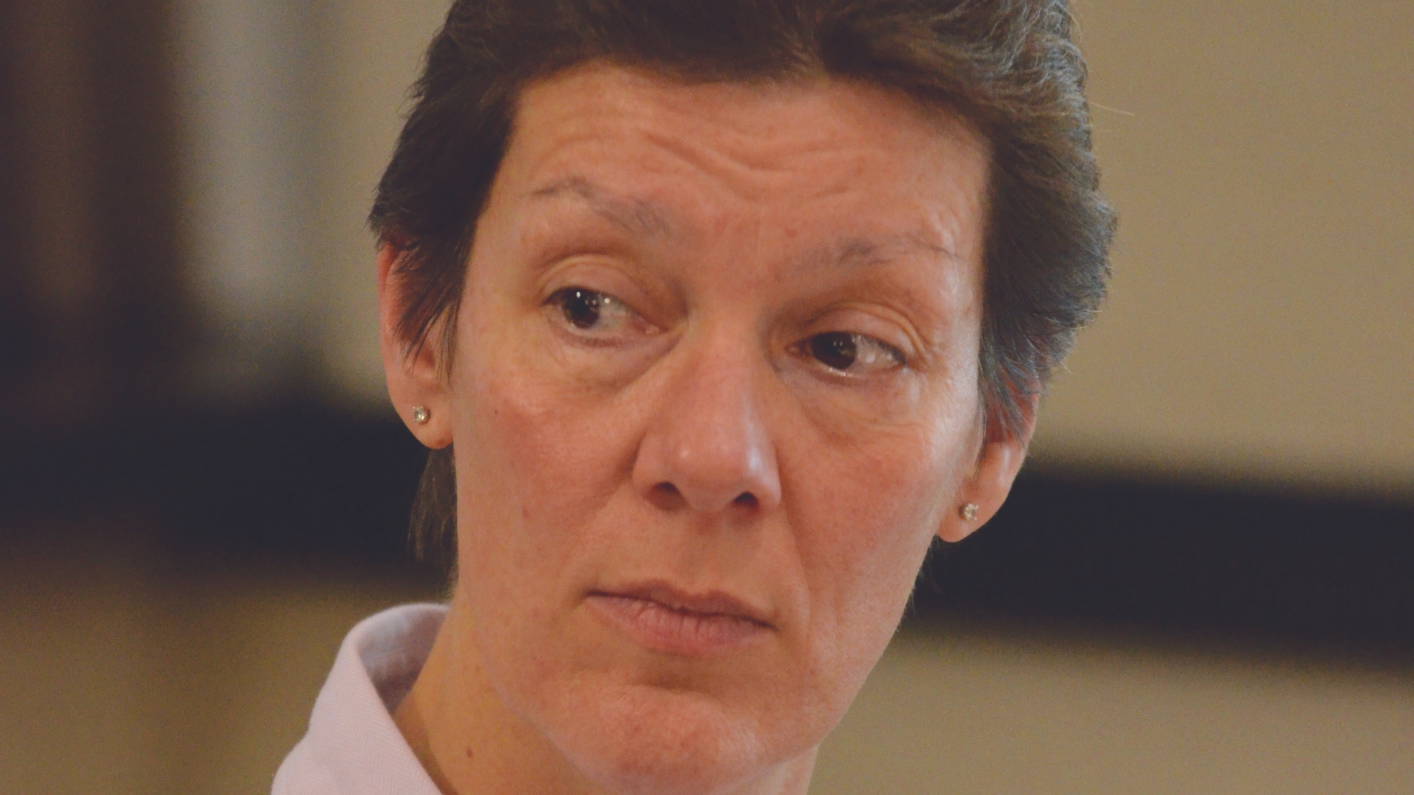Feature / NHS Wales: under pressure
The NHS across the UK faces significant operational and financial challenges. The size of the waiting list, long waits at accident and emergency and slow ambulance response times are hard not to notice. But while the public may be aware in general terms that the NHS is under financial pressure, the scale of it is less visible, hidden behind ambitiously ‘balanced’ forecasts, with the financial risks tucked away in more detailed board reports.

Not so in Wales, where the significant financial problems have been clear for all to see from day one this year for those prepared to look. All seven health boards in Wales started the year quite clear about their inability to balance their books and reporting a combined planned deficit of £650m. Addressing this involved a major government-wide review of departmental budgets to find an extra £425m for the NHS, underpinning an additional in-year allocation of £460m to health boards.
As part of the deal, all health boards in November were asked to reduce their planned deficits by 10%, before applying the mix of recurrent and non-recurrent additional funding to deliver newly set control totals for the year.
But while ministers recognise that even with the increased settlement the NHS faces significant challenges – health boards were still looking at a combined deficit of £123m for 2023/24 – there is a clear expectation that the health boards will make significant progress towards those control totals this year and deliver balanced plans next year.

Even before the emergency budget was published, health and social services minister Eluned Morgan (pictured) had made it clear that the settlement would be the last say in additional funding. ‘I want to be absolutely clear with you. There is no more money. You can’t bust the amount we’ve set for you. There is no bail out,’ she told the HFMA Welsh branch conference in September. And this message has stayed consistent subsequently: there is sympathy for the difficulty of the situation, but no wriggle room on the money.
At the end of December, the government unveiled its draft budget for 2024/25, including a further £450m increase for the NHS. It said the increased allocations this year and next meant funding for the NHS was increasing by more than 4% in 2024/25 compared with less than 1% in England. (There was a further small boost to capital funding in the final budget published at the end of February.)
Cardiff and Vale UHB
Cardiff and Vale University Health Board started the year with an £88.4m deficit – about 8% of its original allocation for the year and 5% of its total income. Even to reach this point, it had committed to finding £32m of savings. At 4% of its net provider spend, that is a big ask.
‘That was much more ambitious than previous years,’ says Catherine Phillips (pictured), the board’s director of finance. ‘Between 1% and 2% would have been more typical. We haven’t delivered savings like that since we were in financial recovery.’
Despite this stretching and ambitious target, the board has identified schemes to deliver it – albeit with a greater reliance on non-recurrent savings than Ms Phillips would like. However, as of the November reset, the ask has become even more demanding, with the board needing to cut costs by a further £8.8m as a requirement of the extra funding. Hitting its control total of a deficit of £16m is even more important as £45m of this year’s increased funding will only formally be made recurrent once this is achieved.
As of February, the board was still developing its further savings plans, but had plans or ideas in place for most of the £8.8m. For both the original £32m and the additional savings, only around two-thirds of the saving plans are recurrent.
‘That is not a number that makes me feel very comfortable,’ admits Ms Phillips. With one eye on next year’s requirement to deliver a balanced plan, Ms Phillips knows that any non-recurrent savings delivered this year have to be re-found next year before the board can look to eliminate its existing £16m overspend.
Alongside the financial position, it has been an incredibly difficult year operationally too. Across Wales demand remains high. Accident and emergency attendances have fallen steadily since last summer from nearly 100,000 attendances in May to just over 84,000 in December. But the elective waiting list remains high at nearly 760,000 (November), involving 582,000 individual patients.
Within this there are still some 50,000 pathways where patients have been waiting for more than a year for their first appointment, despite this supposedly having been eliminated by November 2022. Cardiff and Vale has the highest number of patient pathways waiting to start treatment per 100,000 population according to latest figures, as well as the longest list of one-year-plus waiters.
‘We are not progressing with access targets as fast as we would like,’ says Ms Phillips. ‘There is a real focus on getting the optimum productivity from our services that we can in this financial year and on an ongoing basis.’
Balancing these priorities – quality and access along with reduced costs – is a significant challenge. One area of focus for Cardiff and all Welsh health boards has been reducing agency costs – over-reliance on agency staff is expensive and can have quality implications.

For example, last summer the board was looking at a high reliance on agency staff to plug a midwifery gap in its maternity services ahead of new nursing staff starting post-summer, across its acute and community services. ‘We decided to consolidate our services around the acute provision and we weren’t able to offer some of the maternity-led and home birth services until the new midwives started in September,’ says Ms Phillips (pictured).
Although this reduced choice, it addressed concerns about the quality of a service so heavily dependent on temporary staffing and avoided daily temporary staffing costs.
Overall, Ms Phillips says the board has been able to deliver everything as planned. ‘We’ve tried to manage all of the priorities, but where we could have probably gone further for not a lot of money, we haven’t been able to do that. And actually, we’re probably sailing closer to the targets than we would have wanted to.’
There is a publicly stated expectation that health boards will deliver balanced plans for 2024/25. Ministers have talked tough about deficit budgets not being acceptable. But saying it and delivering robust, balanced plans are very different things. In February, Ms Phillips said that early drafts of the plan suggest a deficit bigger than the £16m the board hopes to end this year with – in part a result of this year’s non-recurrent savings.
‘The risks to planning are quite significant,’ she admits. The level of pay settlement is clearly a big uncertainty, with the government holding back funding for this. But so is the potential impact of ongoing industrial action – this can add temporary staff costs, while also hitting the board’s elective activity performance.
The board is looking at an increased level of savings next year and this will not currently allow it to manage within its resources from the government. Progress with government priorities or service cuts are the only other way to balance the equation. But Ms Phillips is also concerned that the necessary focus on hitting the short-term financial positions means the system as a whole is not doing enough to address the wider determinants of health.
Improving population health is the key to reducing demand in the NHS and delivering a more sustainable service – but the focus on meeting immediate demand reduces the funding and time that can be ploughed into longer term solutions.
Aneurin Bevan UHB
It is a similar story at Aneurin Bevan University Health Board. Even with an ambitious £52m savings target (3% of its overall running costs), its original plan submitted to the Welsh government suggested a deficit of £113m. Slippage in this cost improvement plan alongside significant service pressures and higher inflation than forecast led to a revised mid-year forecast of a £145m deficit. Its share of November’s extra funding was £88.3m, with £64.5m of this awarded recurrently on the basis that the board makes progress towards its new control total of £13m.
A January board paper suggests the revised forecast is a deficit of £56m – with a risk range between £51m and £61m. Robert Holcombe, the board’s director of finance and procurement, says that despite the gap between forecast and control total, the board has made some big strides forward. ‘In terms of the savings, we set out with a £51m plan and we are expecting to deliver about £43m of that,’ he says. ‘In comparison with what we’ve done previously and with other organisations on a gross basis, we’ve done very well.’
He explains further: ‘If you look at specific schemes, they’ve been successful largely, but everything else around them in terms of cost pressures and the other issues driving the pricing and volumes of our services has outpaced the saving. You could argue that the net saving perhaps hasn’t been achieved, but that wouldn’t be fair to the teams that are delivering where they can.’
So a team might have had a savings plan based on reduced usage of goods or services, but the unit price has gone up to such an extent that it has eliminated or reduced the anticipated saving. Or the undershoot on savings is directly related to demand, which for elective and urgent care remains above pre-pandemic levels.
Many of the pressures are outside the health board’s direct control. Patients remaining in hospital despite being fit for discharge is a good example. At the end of December, there were 287 inpatients ready for discharge, with nearly half of these awaiting a social care package to be put in place. Across the whole year, these ‘blocked beds’ are estimated to cost the board around £21.3m. These patients drive temporary staff costs and reduce the board’s ability to optimise its bed capacity.
Temporary staffing costs remain significant, although there are clear signs of improvement compared with last year. Three-quarters of the way through the year, monthly average temporary staffing costs were running at £8m – £1.2m less than the 2022/23 average. Variable pay – taking account of agency, bank and locum staff – was just £6.8m in December, with bank and agency showing a general trend downwards since last summer.
There are lots of measures in place that other health systems would recognise – scrutiny panels looking at recruitment to vacant posts and a freeze on all agency and consultancy for administrative work, for example.
But the board has also gone further. ‘We have stopped all elective waiting list initiatives during this financial year,’ says Mr Holcombe. Although the board has better waiting times than some other boards, this will clearly have an impact on patients.
No services have been stopped, but opportunities to do things differently for services where there is low utilisation have been explored. ‘Before we stop any patient services, we have to consider how and where we are delivering those services,’ he says.
The ‘how’ moves the discussion into the efficiency arena and looking at value-based healthcare options. But the ‘where’ is a big issue for the health board. It currently operates out of four main hospitals, with all four providing urgent care or emergency department services of some sort. The board wants to explore rationalising this, looking at the mix of services and different specialties on each site, and potentially gain some economies of scale – but this is not a fast process.
Mr Holcombe says there is a tension between the board’s strategy for more place-based and out-of-hospital care and the unrelenting demand for acute care. ‘It is a challenging environment to try to align our resources with our strategy when we have no headroom,’ he says.
Reducing the board’s bed base is a key part of the solution to bringing down costs. The board’s flagship hospital – Grange University Hospital – opened during Covid and initially operated as a sort of field hospital during the pandemic. But as it has moved into more of a steady state, the overarching aim is to rationalise the beds on other sites, potentially reducing the number of wards by three or four. With many of these ‘excess’ beds staffed with temporary solutions, this would potentially reduce costs. But many of these beds are still in use with patients who are waiting for transfer to a care home or for a package of support to be put in place at home – keeping that cost reduction just out of reach.
Mr Holcombe remains optimistic. He says the £50m overspend should be seen in the context of the board’s £1.7bn turnover and he believes the board can recover its finances in two to three years. However, he recognises that the board is subject to a target that requires it to break even over three years – a duty it is in breach of after a first significant overspend last year.
The board was moved up to level 4 (targeted intervention) for finance and planning in the Welsh oversight framework at the beginning of the year as a result of its deficit and will be subject to further support from the Welsh NHS Executive. Mr Holcombe suggests there are other ways, beyond increasing funding, that the government could help health boards to manage the current challenges.
‘More flexibility in the use of the resources that we have available and less ringfencing would help,’ he says. Rather than having funds earmarked for specific initiatives or equipment, this would allow the board to apply its whole budget towards delivering its core service and improving its financial position. The current approach using specific funding streams can create ‘conflicting messaging’ for the service.
On a similar tack, Mr Holcombe says, providing more funding on a population basis would be an improvement compared with the piecemeal approach to handing out specific budgets. ‘And it would be helpful to get a faster consultation regime to allow us to do things at scale faster,’ he says – so if the system wanted to consult on rationalisation proposals, it would see the impact sooner.
Finally, echoing a message from across the UK, he says that supporting social services to assess patients ready for discharge and prevent admission in the first place would also have a big knock-on benefit for the NHS.
Wales faces the same range of pressures as the NHS across the UK, but it has arguably been more transparent about the scale of the financial challenge. There remain significant challenges ahead despite what Mr Holcombe describes as a ‘really good settlement’ for the NHS next year. Improved productivity and continued cost improvement will play their part. However, the straightforward message from finance leaders is that this needs to be accompanied by realism about what can be delivered in the current environment and that sustainability won’t be achieved overnight.
Also in the March 2024 issue of Healthcare Finance
- Structural challenges - Hywel Dda University Health Board can do somethings itself to address its underlying deficit. But sustainable finances will also depend on social care support and structural issues.
- Provider view - as a commissioned service of specialist servcies, Velindre University NHS Trust is protected from some of the challenges facing Welsh health boards. But it feels some pressures in exactly the same way and is also working to help reduce financial costs across the system.
Related content
The value masterclass shares examples of organisations and systems that have pursued a value-driven approach and the results they have achieved.
We are excited to bring you a fun packed Eastern Branch Conference in 2025 over three days.